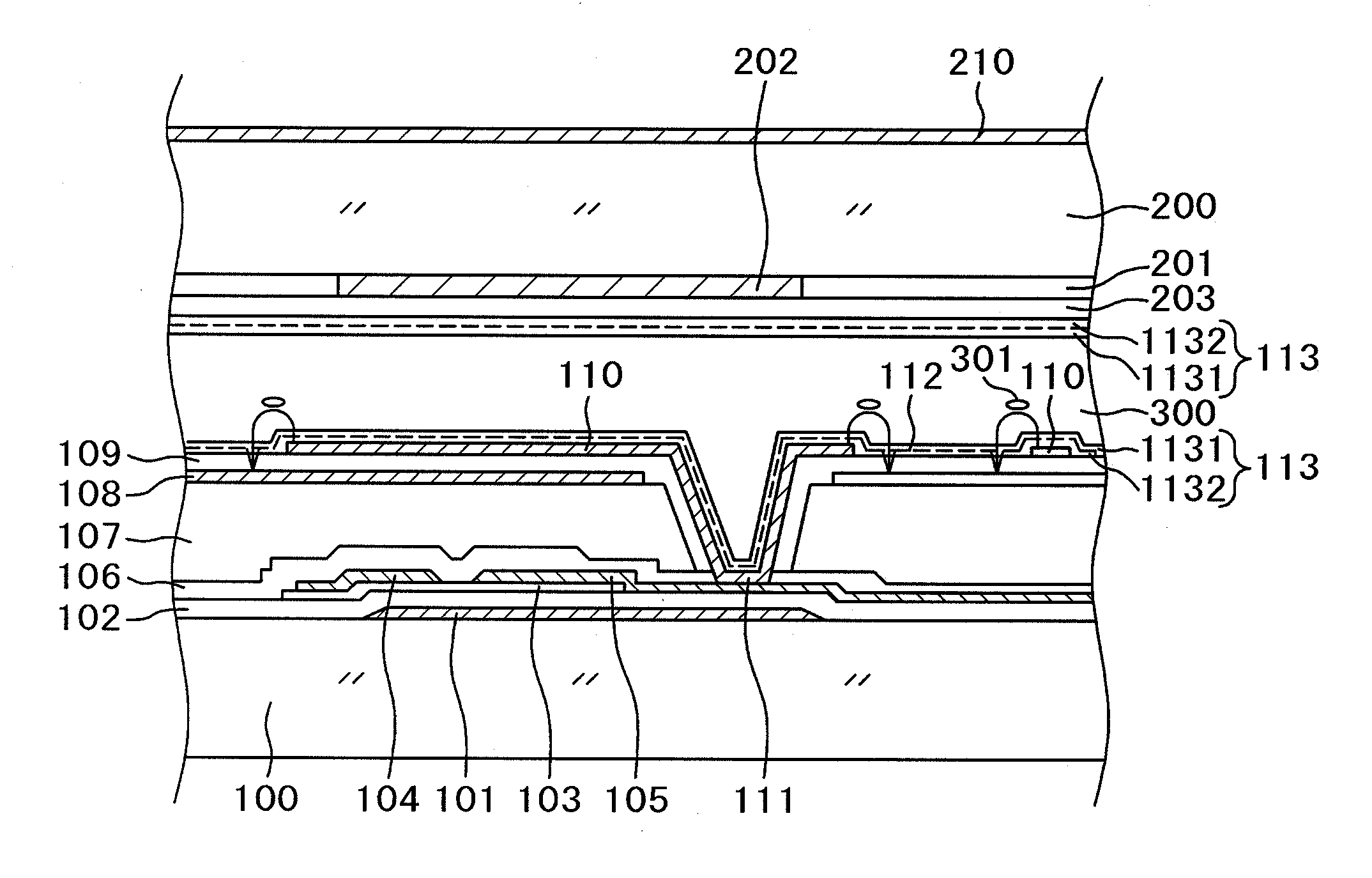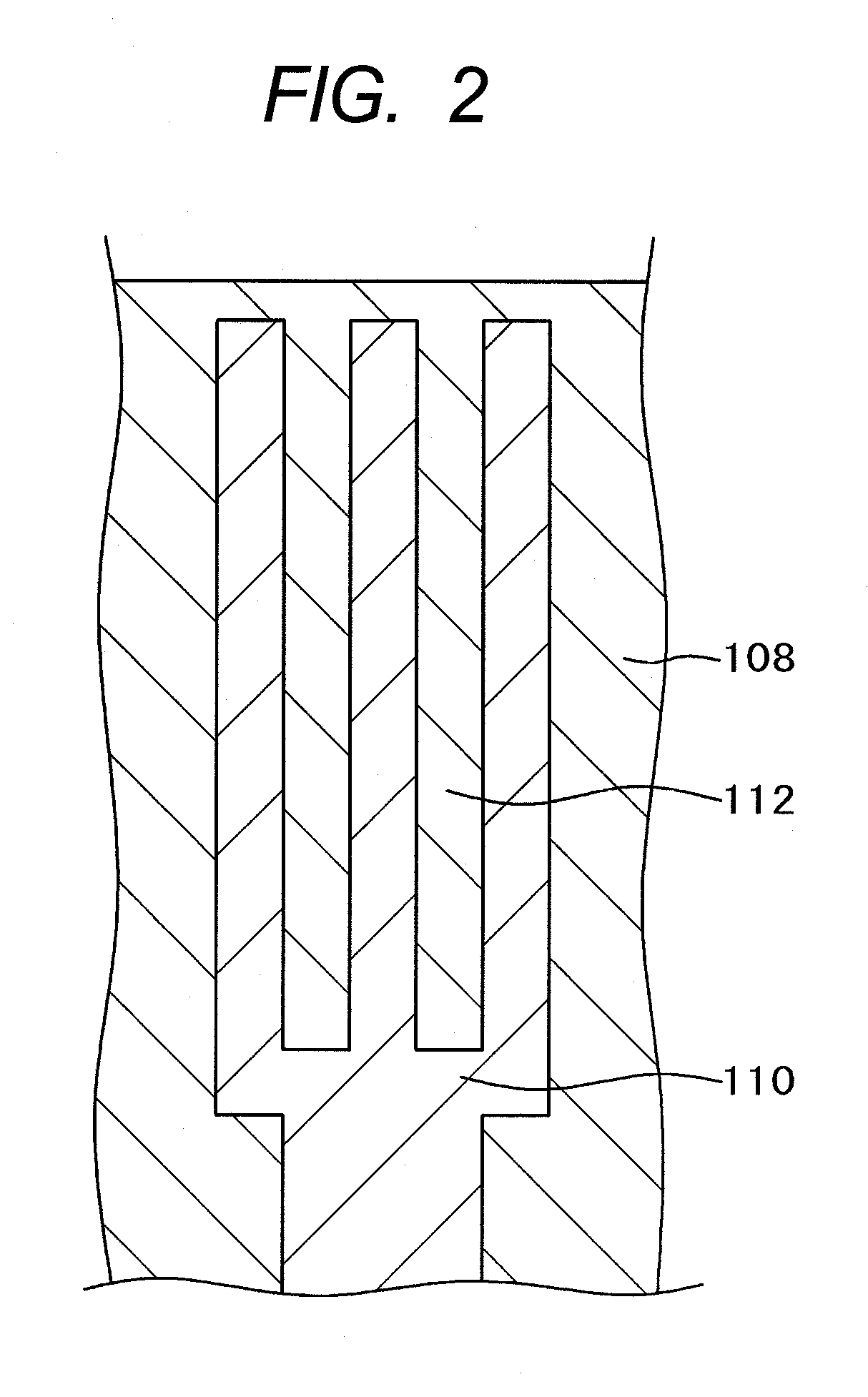Liquid crystal display device comprising an alignment film that includes a first alignment film formed of a precursor of polyamide acid or polyamide acid ester and a second alignment film underlying the first alignment film wherein the first alignment film accounts for between 30% and 60% of the alignment film
a liquid crystal display and alignment film technology, applied in the direction of optics, instruments, chemistry apparatus and processes, etc., can solve the problems of low alignment stability, power-quality display typified, poor quality display, etc., to avoid degrading the mechanical enhance the (lc) anchoring strength of the alignment film, and enhance the film strength
- Summary
- Abstract
- Description
- Claims
- Application Information
AI Technical Summary
Benefits of technology
Problems solved by technology
Method used
Image
Examples
first embodiment
[0036]FIG. 1 is a cross-sectional diagram showing a structure in a display region of an IPS type liquid crystal display device. A variety of electrode structures for IPS type liquid crystal display devices are proposed and put in practical use. The structure shown in FIG. 1 is widely used now. In simple terms, over a common electrode 108 formed in a flat monolithic form, a comb-shaped pixel electrode 110 is formed with an insulation layer intervening therebetween. By rotating liquid crystals 301 depending on a voltage between the pixel electrode 110 and the common electrode 108, light transmissibility through a liquid crystal layer 300 is controlled pixel by pixel and an image is thus produced. The structure in FIG. 1 will be described in detail below. While the present invention is described by taking the structure in FIG. 1 as an example, the invention can be applied to an IPS type liquid crystal display device having a structure other than that shown in FIG. 1.
[0037]In FIG. 1, a ...
second embodiment
[0090]In the first embodiment, how the alignment film structure and the process for photo-alignment contribute to an advantageous effect against AC afterimages is mainly discussed. The structure of the present invention can achieve the effect against so-called DC afterimages, besides AC afterimages.
[0091]DC afterimages are a phenomenon resulting from charge accumulation in certain portions of the alignment film. Hence, DC afterimages are a reversible phenomenon, because they disappear when charges dissipate. In order to avoid DC afterimages, it is conceivable that the alignment film is adapted to have a structure that facilitates fast dissipation of charges accumulated in the alignment film or a structure that primarily prevents charges from being accumulated in the alignment film.
[0092]First, descriptions are provided for the structure that facilitates fast dissipation of accumulated charges. We evaluated DC afterimages as follows. That is, the checker flag pattern made up of 8×8 w...
PUM
| Property | Measurement | Unit |
|---|---|---|
| thickness | aaaaa | aaaaa |
| thickness t2 | aaaaa | aaaaa |
| wavelengths | aaaaa | aaaaa |
Abstract
Description
Claims
Application Information
 Login to View More
Login to View More - R&D
- Intellectual Property
- Life Sciences
- Materials
- Tech Scout
- Unparalleled Data Quality
- Higher Quality Content
- 60% Fewer Hallucinations
Browse by: Latest US Patents, China's latest patents, Technical Efficacy Thesaurus, Application Domain, Technology Topic, Popular Technical Reports.
© 2025 PatSnap. All rights reserved.Legal|Privacy policy|Modern Slavery Act Transparency Statement|Sitemap|About US| Contact US: help@patsnap.com



